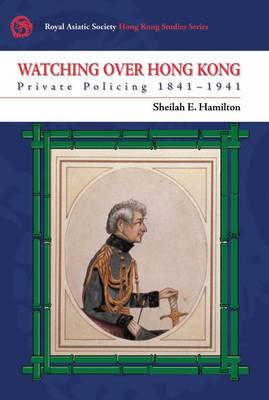
- Afhalen na 1 uur in een winkel met voorraad
- Gratis thuislevering in België vanaf € 30
- Ruim aanbod met 7 miljoen producten
- Afhalen na 1 uur in een winkel met voorraad
- Gratis thuislevering in België vanaf € 30
- Ruim aanbod met 7 miljoen producten
Zoeken
Omschrijving
In this pioneering study, Sheilah Hamilton shows that, from the earliest days of British rule, the colonial administration introduced harsh legislation to control Chinese watchmen who were employed to protect the fledgling colony's property in the absence of an effective public police force. She examines the growth in different Hong Kong Government departments of what would now be regarded as 'hybrid' police and argues that the existence of such posts within the civil service resulted in greater social control of the local Chinese community at minimal extra expense. Amongst the topics of private security explored are the impact of the few private security personnel engaged by local Chinese organizations such as the Nam Pak Hong, Tung Wah Hospital and Po Leung Kuk; the evolution of the District Watch Force from a force engaged in purely local security duties to an arm of the Hong Kong Government involved in non-security matters such as controversial sanitary inspections; and the unique system of village guards and scouts in the New Territories. A particular focus is the early maritime security problems and the internal security forces of Hong Kong's shipping companies. A final chapter compares the situation in Hong Kong and explores the similarities and differences with Shanghai during the period.
Specificaties
Betrokkenen
- Auteur(s):
- Uitgeverij:
Inhoud
- Aantal bladzijden:
- 244
- Taal:
- Engels
- Reeks:
Eigenschappen
- Productcode (EAN):
- 9789622099005
- Verschijningsdatum:
- 17/06/2008
- Uitvoering:
- Hardcover
- Formaat:
- Genaaid
- Afmetingen:
- 160 mm x 231 mm
- Gewicht:
- 521 g

Alleen bij Standaard Boekhandel
+ 152 punten op je klantenkaart van Standaard Boekhandel
Beoordelingen
We publiceren alleen reviews die voldoen aan de voorwaarden voor reviews. Bekijk onze voorwaarden voor reviews.











